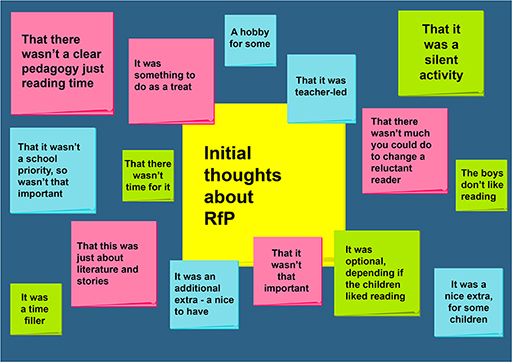3.1 Different forms of pleasure associated with reading
The notion of pleasure in relation to reading is complicated by the fact that reading may induce feelings of sadness, irritation, anger, and even discomfort. Different forms of pleasure and satisfaction exist. Reading for Pleasure does not merely lead to laughter and joy. Readers choose to read for diverse personal purposes, and may find satisfaction in understanding more about dinosaurs, pets, space, sport, women in history and so forth. Additionally, their goals may be less content focused; they may be seeking different emotional states (e.g. a desire to laugh and be entertained), want to sustain their delight in a series and find out more about the character’s lives, or they may wish to read the book in order to discuss it with their friends.
A recent three-year study suggests that teenage readers think free reading brings them five distinct kinds of pleasure (Wilhelm, 2016).
- Immersive pleasure of play, e.g. getting lost in a book and living through the text.
- Intellectual pleasure, e.g. finding out about issues of interest in the world and solving problems in narratives.
- Social pleasure, e.g. belonging to a community of readers and connecting to others through reading, as well as identifying as a reader.
- The pleasure of functional work, e.g. using reading to learn, think, and act in different ways, and using reading to shape one’s writing.
- The pleasure of inner work, e.g. using reading to learn about oneself, to imagine oneself in different situations and consider options.
Wilhelm argues that only intellectual pleasure was directly fostered in the young people’s schools and that educators need to recognise the central role of pleasure in developing competent lifelong readers. Synonyms for pleasure include: desire, preference, wish, choice and liking – all of which speak to the Reading for Pleasure agenda, and to children’s agency as readers.
Activity 2 Has your view of RfP changed?
Have a look at the statements below in Figure 2 by primary phase teachers involved in a yearlong Open University project on developing a whole school ethos and culture of RfP. Their views, noted in 2021, have changed radically since. Might you have agreed with any of their statements at the start of this course? What was your perception of Reading for Pleasure at the beginning?
Make a note of two things you used to believe and two things you now know and understand about Reading for Pleasure and how to foster it.
Comment
Everyone’s learning journey is unique, and there are many points you might have included about developing the habit of reading in childhood. You may have noted:
- RfP is choice-led and associated with intrinsic motivation
- RfP is social, affective, and relational
- Teacher knowledge of children’s texts and of readers is essential
- A planned RfP pedagogy is needed to motivate, engage and sustain readers
- The impact of RfP pedagogy should be monitored and evaluated
- Reading Teachers make a difference on children’s desire to read
- Creating a school RfP culture and community is an ongoing journey not a programme to deliver.

